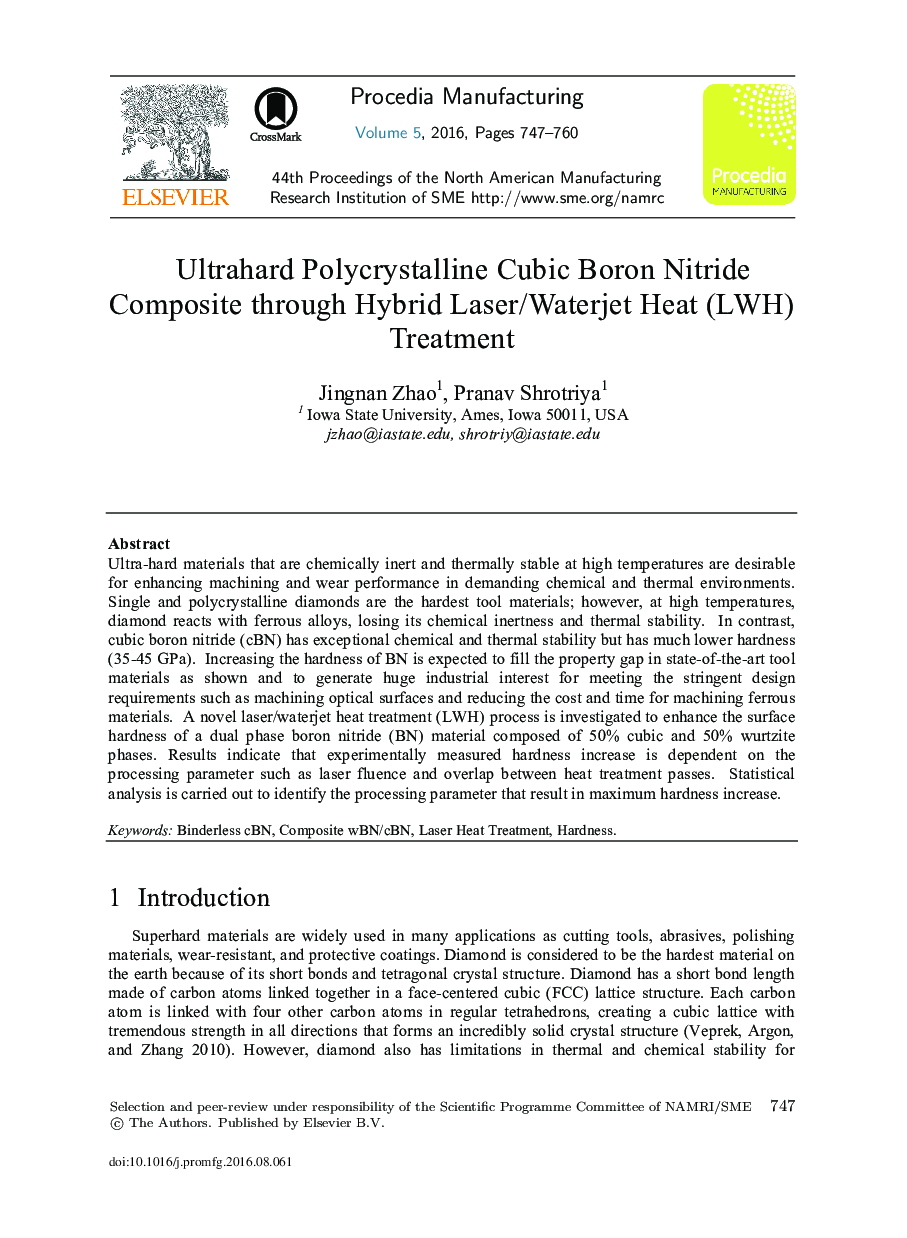| Article ID | Journal | Published Year | Pages | File Type |
|---|---|---|---|---|
| 5129061 | Procedia Manufacturing | 2016 | 14 Pages |
Ultra-hard materials that are chemically inert and thermally stable at high temperatures are desirable for enhancing machining and wear performance in demanding chemical and thermal environments. Single and polycrystalline diamonds are the hardest tool materials; however, at high temperatures, diamond reacts with ferrous alloys, losing its chemical inertness and thermal stability. In contrast, cubic boron nitride (cBN) has exceptional chemical and thermal stability but has much lower hardness (35-45Â GPa). Increasing the hardness of BN is expected to fill the property gap in state-of-the-art tool materials as shown and to generate huge industrial interest for meeting the stringent design requirements such as machining optical surfaces and reducing the cost and time for machining ferrous materials. A novel laser/waterjet heat treatment (LWH) process is investigated to enhance the surface hardness of a dual phase boron nitride (BN) material composed of 50% cubic and 50% wurtzite phases. Results indicate that experimentally measured hardness increase is dependent on the processing parameter such as laser fluence and overlap between heat treatment passes. Statistical analysis is carried out to identify the processing parameter that result in maximum hardness increase.
